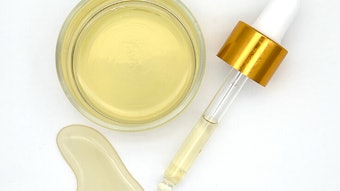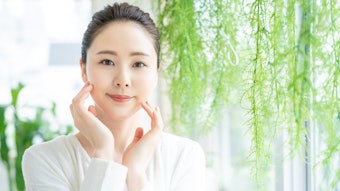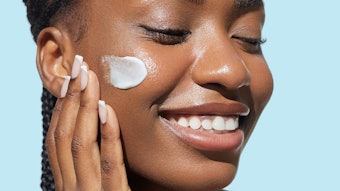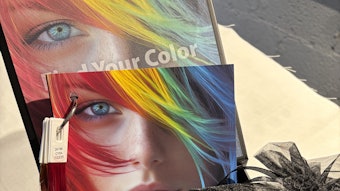After having served as a judge at a local science fair last spring, this author brought home a message of the pervasive appeal of natural skin care actives based on a precocious fifth grader’s clinical study titled, “Garlic: Winning the War against Vampires (sic) Zits.” The proposed mechanism of action was that garlic (Allium sativum) exhibits antimicrobial activity. Her home clinical study involved making an extract from garlic bulbs and incorporating it into a cocoa butter-containing body oil, then comparing its effects with those of a commercial benzoyl peroxide cream, minocycline and toothpaste—an interesting mix of positive and negative controls.
While her subject population of one individual per test material requires expansion in any follow-up studies, her enthusiasm in evaluating this natural active was impressive, as was her successful salesmanship in convincing her older sibling to apply the garlic-containing body oil twice daily, as it certainly affected his social life. Further, the results of the garlic treatment, as shown by photos taken over the course of the study, were surprisingly good.
This study parallels in microcosm the skin care industry’s drive to formulate products based on nature’s remedies. However, formulators of such products seek more scientific guidance to determine whether a particular natural material measures up to its synthetic counterpart. Here, both current knowledge about the skin and data about the myriad active ingredients available can be used to make decisions. Knowledge on skin physiology increases continually and phytochemical actives are legion.
Defining ‘Natural’
It is important to clarify how one might view actives from a natural perspective and gauge their naturalness. A previous discussion1 explained that purists view natural actives as only those taken directly from nature by acceptable physical processes such as extraction, and purified by natural solvents consisting of water and ethanol, and possibly glycerine and vegetable oils. In addition, supercritical carbon dioxide extraction may be the sole 20th century method accepted. An alternate choice of active for these true believers could be botanical extracts themselves standardized to a high level of the desired active compound; in fact, in the nutraceutical arena, these are sometimes preferred as they contain undetermined synergistic components that purification techniques remove from the extract.
Beyond this orthodoxy, formulators can entertain the use of both naturally derived and nature identical compounds and variations thereof. Just like the functional excipients made from coconut oil, sugar and soybeans used every day, e.g., sucrose cocoate and potassium cocoyl hydrolyzed soy protein, natural actives may be chemically modified to change their solubility, increase their penetration into the skin and improve their stability.
Esterification chemistry can do this, and this process covers many active derivatives and is considered acceptable by all of the certifying organizations—from Ecocert and Natrue, to the standards promulgated by NSF International, such as the American national standard for personal care products containing organic ingredients (NSF/ANSI 305).
Lastly, the question of acceptability of nature-identical compounds creates two ideological camps. The aforementioned purists and the realists who understand that most vitamins orally ingested by consumers are synthetic nature-identical chemicals marshal on the positive side of the argument, considering also that the justification for most of the food preservatives and other materials allowed by Natrue revolves around their natural occurrence even though the commercial articles are synthetic.2
Approaches to Activity
Using a pharmaceutical/drug delivery paradigm, these individual substances may be designated as active cosmeceutical ingredients (ACIs). As previously noted, their activity can be viewed from two primary perspectives. One is based on the structure activity relationships (SARs) of the individual compounds and their mechanisms of action. The other paradigm is a holistic one based on using an entire extract itself as the active, one that has been standardized for safety and efficacy and potentially with the added synergistic effect of multiple components from the biological plant. This latter approach may reduce the chance of active “overdose,” which can cause irritation or worse, and it takes the spotlight off of any effects of the final product on the physiology of the skin, hopefully reducing suspicion that product claims have crossed the line between cosmetics and drugs.
Formulators must look at the potential of ACIs to be delivered to their target site of action, through the layers of the skin, and to functional cells and structures, being sure to review the available data with this in mind. It is also important to note that a chemical may be active in vitro on specific cell types, and that enzyme systems may demonstrate a wide range of activity in modulating gene expression in these target cells, without ever working on the consumer’s skin. An active’s up- and down-regulation of skin functions can be measured in exploratory gene microarrays, and that action validated with quantitative polymerase chain reaction (qPCR) to measure the DNA produced for specific genes of interest.3 However, in the end the ACI still must find its way into the living skin by passing through the outermost stratum corneum barrier, and either navigating through the epidermal lipid tributaries of the intercellular river surrounding an archipelago of corneocytes, or flowing down corkscrew channels in the skin via the transfollicular route.
Naturals for Skin Lightening
The full menu of natural actives available ranges from fruit salads to vegetable soups, recipes for which formulators hope to ameliorate any and all skin conditions, including to retard or reverse the signs of aging, calm inflammation, decrease sebum, reduce or induce hair growth, lighten or darken skin pigmentation—the list goes on. One focus that has captured recent attention is skin lightening or fairing, as it’s sometimes called; alternatively, fading, bleaching, whitening and promoting even skin tone.
Worldwide, many consumers want to be “Fair and Lovely” as the eponymous best-selling cream series in India demonstrates. Representing the consumer desire for darker skin color to become brighter, for uneven skin tone to become homogeneous, and for older skin to be free of age spots, this product line started as a single cream delivering vitamin B3 as niacinamide, whose action is based on an inhibitory effect on the melanosome transfer from melanocytes to keratinocytes. This governs a person’s skin color aspect as much, if not more than the actual amount of melanin overall. In this product, Unilever has added two organic sunscreens, as do many other skin-lightening product manufacturers, which is potentially problematic for natural formulators looking for all natural products—although the inorganic mineral sunscreens zinc oxide and titanium dioxide may be acceptable, notwithstanding the nano issue posed by some variants. Similarly to Unilever, Procter & Gamble introduced the Olay brand “Total Effects 7-in-1 Tone Correcting Spot Treatment,” also based on the niacinamide active.
The goal of reducing hand spots may be even more difficult to attain as these markings, especially prominent on the dorsal skin of the hands, may also contain lipofuscin, the polymeric pigment composed also of fatty acid by-products. Exfoliation of the epidermis can help with this, and all depigmenting skin cream compositions hence use AHAs like lactic and glycolic acids for exfoliation to speed depigmentation.
Two vitamin substances, B3 and C, are also surfacing in a large number of fade creams, both with and without hydroquinone—the OTC monograph active that had been under scrutiny for topical toxicity issues. Finished products for instance, include the Nivea for Men Advanced Whitening cream by Beiersdorf making use of vitamin C as its prime active, following Japan’s lead in the “quasi drug” category for medicated cosmetics,4 where 10% vitamin C is the standard. As previously mentioned the vitamins taken as supplements are synthetic, nature-identical analogs of the compounds found in nature and except for issues of chirality and purity, they function equivalently to the molecules found in nature. With vitamin C and ascorbyl derivatives as well-documented effective skin-lightening actives, and niacinamide and B3 equivalents working for both Unilever and Proctor & Gamble, can this nature-identical class of biologically active materials, i.e., vitamins, be ignored simply because the commercial materials are mostly synthetic due to cost and availability?
Other actives for skin lightening were cited in a recent cosmetic dermatology compendium on cosmeceuticals.5 Besides hydroquinone, those named included kojic acid, a tyrosinase inhibitor that acts via copper chelation, which like salicylic acid, can wreak havoc on a product’s color by sequestering iron. Also named were glabridin, found in licorice; mulberry root; soy, by its small labile proteins that act as inhibitors in the PAR-2 pathway, which is covered by at least one Johnson & Johnson patent;6 vitamin C; glycolic acid, for its AHA exfoliation effect; niacinamide; and azelaic acid, a dimer acid occurring in yeast that is commercially synthetic and only effective at the high level of 20%. In addition are the botanicals emblica, another chelator used as the nature-identical synthetic, and the ubiquitous retinoids—purview of a dermatologist’s prescription only, except vitamin A derivatives and retinol.
In the retail environment, a quick foray online revealed a large selection of products for skin lightening, ranging from basic hydroquinone creams to serums using botanicals with or without active additives such as arbutin, kojic acid or vitamin C. One representative contained arbutin, salicylic acid and an ester of vitamin C, besides extracts with reputed lightening activity, namely licorice; Morus root (mulberry); emblica; Agaricus; and Uva ursi (bearberry). Worth mentioning as another confirmation of the much sought-after skin-lightening benefit, also termed skin brightening, is the observation of seven new, high-priced products delivering on this promise that were featured in the New York Times’ Spring Style magazine.7
Patent literature reveals a few interesting new technologies as well. Conducting a “Quick Search” in the online US Patent and Trademark Office database yielded 586 patents for “skin lightening” and “natural,” and 85 patents for “skin lightening” and “botanical.” Scanning a few of these abstracts and claims brought a few gems to the surface. One group of five patents8, 9 teaches the use of yohimbine as an inhibitor of melanin production by being “alpha.sub.2 –antagonists,” an activity this author had not encountered previously. Another describes the use of turmeric-derived tetrahydrocurcuminoids for skin lightening based on combined anti-inflammatory and cancer preventive/chemoprotective mechanisms.10
Additional interesting plant-based lightener patents include those teaching a method of lightening skin comprising administering to a human subject an effective amount of a rumex plant extract; for example, Western Field Dock (Rumex occidentalis),11 which is said to inhibit melanogenesis. And recently, again assigned to Johnson & Johnson,12, 13 are two patents that disclose the use of a low molecular weight fraction of Phyllanthus niruri, called Bhumi amla or Indian gooseberry in ayurvedic tradition, which acts as an anti-inflammatory—one of the major secondary mechanisms of skin lighteners, since they help prevent post-inflammatory hyperpigmentation.
In the Physician’s Desk Reference for Herbal Medicines,14 the only direct reference to skin pigmentation is the indication of carrot, Daucus carota of the Umbelliferaceae, for photodermatosis and pigment anomalies, although there are near 50 species indicated for anti-inflammatory effects that could also act via this pathway. Another Internet-based source for actives of the botanical kind is the US Department of Agriculture’s online Dr. Jim Duke database,15 where a search on “tyrosinase-inhibitor” yields more than a dozen active chemicals purported to have this activity, to which the system further links to the plants containing them, although looking through the list, the activity appears to be more anti-inflammatory than melanogenesis inhibition.
Global Outlook
Natural actives will continue to play a growing role in skin care treatment products as the population demographic skews older and technology advances. Today, many major personal care companies employ biofocused groups to screen new actives versus benchmarks by various proprietary in vitro, in vivo or ex vivo methods, including the gene modulation studies mentioned previously. For more information, the curious cosmetic chemist may want to explore the avenues proposed in the new “Formulating Natural Cosmetics” course presented by the author with Judi Beerling through the Cosmetics & Toiletries Complete Cosmetic Chemist program,1 which emphasizes the ethnobotanical approach asserted by Balick of the New York Botanical Garden.16 He noted that indigenous peoples worldwide have a large number of dermatological remedies in their native pharmacopeias that can provide leads for new actives. More on this will be presented in subsequent columns.
From a formulator’s perspective, natural actives overall are a mixed bag. They run the gamut from very water-soluble, i.e., vitamin C and lactic acid; and very oil-/lipid-soluble, i.e., astaxanthin and vitamin E/tocopherol; to poorly soluble, i.e., allantoin; or mostly alcohol-soluble—salicylic acid. They can also be subject to oxidation and discoloration or odor formation, e.g., green tea polyphenols and retinol, or not—menthol. The overall recommendation is to conduct pre-formulation experiments and literature/patent searches to gain a thorough understanding of each compound as a foundation for creating a product that delivers an effective, stable dose of the active to the target site in the skin. Sorry for the pharmaceutical/drug language again; as a reminder, be careful with claims so to avoid overpromising to the consumer and overstepping cosmetic bounds with regulatory agencies. Reproduction of the article without expressed consent is strictly prohibited.
References
- A Georgalas, Developing natural cosmetic formulations, in the Cosmetics & Toiletries Complete Cosmetic Chemist Training Program, available at learn.CosmeticsandToiletries.com (2012)
- Natrue certification standards, available at www.natrue.org/certification, or NATRUE_Label_Annexes_V2_3_04_October_2011 download, available at www.natrue.org/meta/downloads (Accessed Mar 2, 2012)
- Genemarkers LCC, Genomics for personal care, available at www.genemarkersllc.com/services-care.htm (Accessed Mar 2, 2012)
- H Ando, MS Matsui and M Ichihashi, Quasi-drugs developed in Japan for the prevention or treatment of hyperpigmentary disorders, Int J Mol Sci 11, 2566–2575; doi,10.3390/ijms11062566 (2010)
- M Rendon and J Gaviria, Skin lightening agents, in Cosmeceuticals, 2nd edn, ZD Draelos, ed, Elsevier: New York, Amsterdam, London (2009) pp 103–110
- US Pat 6,750,229, Methods for treating skin pigmentation, M Seiberg and S Shapiro, assigned to Johnson & Johnson (Jun 15, 2004)
- New York Times Spring Style magazine (Feb 19, 2012) pp 98
- US Pat 6,096,295, Composition for causing skin lightening, BB Fuller, assigned to The Board of Regents of the University of Oklahoma (Aug 1, 2000)
- US Pat 6,110,448 Method for causing skin lightening, BB Fuller, assigned to The Board of Regents of the University of Oklahoma (Aug 29, 2000) 10.
- US Pat 6,653,327, Cross-regulin composition of tumericderived tetrahydrocurcuminoids for skin lightening and protection against UVB rays, M Majeed and V Badmaev, assigned to Sabinsa Corp. (Nov 25, 2003)
- US Pat 6,521,267, Tyrosinase inhibitors from plants, W. Steck, assigned to Fytochem of Canada (Feb 18, 2003)
- US Pat 8,075,930, Extracts of Phyllanthus niruri, S Kaur, M Garay and MD Southall, assigned to Johnson & Johnson (Dec 2011)
- US Pat 8,075,931, Extracts of Phyllanthus niruri, S Kaur, M Garay and MD Southall, assigned to Johnson & Johnson (Dec 2011)
- Physician’s Desk Reference (PDR) for Herbal Medicines, First edn, Medical Economics Company, NJ (1998) p 803
- Dr James Duke database, available at www.ars-grin.gov/duke or www.ars-grin.gov/cgi-bin/duke/listActivities.pl (Accessed Mar 2, 2012)
- Balick, Ethnobotanical approach, in The Science of Ethnobotany in Plants, People and Culture, MJ Balick and PA Cox, eds, Freeman & Co, NY (1996) p 56
Additional Reading
- AC Dweck, Natural actives, in Formulating Natural Cosmetics, Allured Business Media, Carol Stream, IL, USA, ch 10 (2011) p 365
- H Knaggs, Skin aging in the Asian population, in Skin Aging Handbook, N Dyan, ed, William Andrew Inc, NY, ch 9 (2008) p 193 G Menon et al, Approaches to the development of cosmetic products to counter the effects of skin aging, in Skin Aging Handbook, N Dyan, ed, William Andrew Inc:NY, ch 11 (2008) p 272 G Patrick, Medicinal Chemistry, BIOS Scientific Publishers, UK (2001) pp 105, 111, 268










